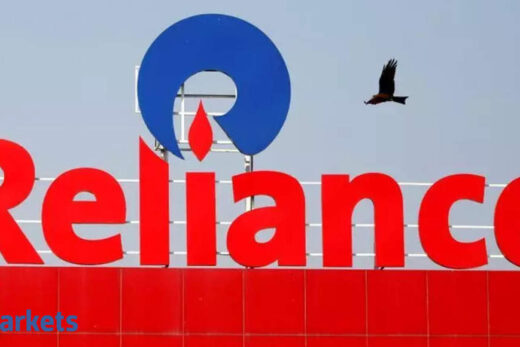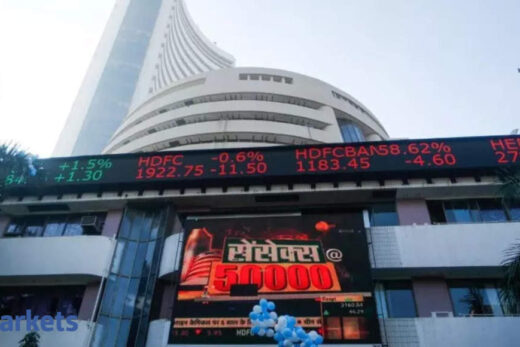Amazon.com Inc. and Walmart Inc.’s Flipkart, however, would surely have felt the rising temperatures. Even as they weigh draft e-commerce rules that seek to restrict online marketplaces — not just theirs, but also the planned super-app by India’s Tata Group — a new existential threat lurks around the corner: a state-sponsored open network for digital commerce.
Commerce Minister Piyush Goyal has set up a committee, chaired by him, to “democratize digital commerce” and “provide alternatives to proprietary e-commerce sites,” according to a ministry press release.
In China, homegrown stores like Taobao, Tmall and JD.com have an unshakable dominance in online retail. But now, the only other billion-people-plus opportunity open to American capital is also slipping away from its grasp.
It’s unclear how exactly India’s open e-commerce network will work — or if it will work at all. The template, according to the press statement, is the country’s highly successful Unified Payments Interface, a public utility that allows any entity to process real-time payments over smartphones provided a set of common protocols is followed. The UPI network has in a short time eclipsed proprietary card-based payments.
Fashioning a similar open network for online commerce will be a lot trickier. It’s easy to make a set of rules where there’s a simple, single-point objective of satisfying the central bank that the same funds aren’t being spent twice. Commerce, by contrast, involves far fuzzier outcomes. Did the consumer get the product she paid for? Did it arrive in one piece? Was the article genuine or a counterfeit? Was the returns policy enforceable? Additionally, brands selling online have to worry about resellers’ creditworthiness and their ability to manage complicated distribution logistics in a country with poor physical infrastructure.
The ministry says that merchants will be able to save their data under the open network to build credit history and reach consumers, breaking silos imposed by platforms “to drive innovation and scale.” Several questions arise: Are Amazon and Walmart-Flipkart, which aren’t directing even 10% of India’s $800 billion annual retail sales between them, stifling innovation to a point where the harm exceeds their positive influence from aggregating demand? Should they, therefore, be mandated to operate their merchant-onboarding processes according to some preset rules, eroding much of their power to determine what goes on over platforms in which they have invested billions of dollars? Like everywhere else, the danger with dominant marketplaces in India is that they will copy the bestselling ideas of merchants and introduce them as private labels. But is this threat currently so large as to require a systematic downgrading of platforms?
Not allowed to own inventory, the two dominant foreign-owned marketplaces have solved many of the underlying problems of trust by using a handful of large sellers they can control. This practice, challenged by some traders’ groups as discriminatory, is now in the crosshairs of India’s competition regulator. So intense is the scrutiny that Amazon’s joint venture with Indian software tycoon Narayana Murthy has decided to fold up by the middle of next year. The seven-year-old JV owns Cloudtail, the largest seller on Amazon’s India website. As the news website Morning Context notes, Cloudtail helped relatively smaller manufacturers — such as a saree brand from Rajasthan — acquire national reach on Amazon, something they may not have achieved on their own. Consumers are getting more choice than before. Once large platform-aligned buyers like Cloudtail are chased out, Amazon’s customer satisfaction scores could be hard to sustain.
As India deliberately de-emphasizes the platform model, even the conglomerate Tata Group, which is planning a marketplace extending from fashion and lifestyle to electronics, may be handicapped if it’s unable to sell a cup of Starbucks coffee on its website. That’s because Starbucks Corp.’s joint venture in India with Tata makes it a connected party, which can’t act as a seller on the super-app, according to draft e-commerce rules. Ditto for Walmart Inc.’s separate wholesale unit. As an affiliated entity of Flipkart, it may not be allowed to hawk a shirt on the retail website.
The winner may be someone pursuing a different business model for aggregating supplies. Mukesh Ambani, India’s richest man, controls both the largest chain of physical stores and the biggest telco. Ambani’s
Industries Ltd. could carry its own inventory, using its $180 billion balance sheet to buy and stock third-party merchandise and sell it online or offline — or in a hybrid online-offline setup.
A deliberate assault on the economics of digital platforms will possibly rank among the most far-reaching separations of platforms and commerce seen anywhere in recent years — save China’s recent forced restructuring of Ant Group Co.‘s operations. America’s historic moves to segregate coal from railroads, commercial enterprises from banking, and television networks from programming took place in a very different era that ended with breaking up AT&T Inc.’s lock on communications in 1982. But the pendulum is swinging again. Lina Khan, chosen by President Joe Biden to chair the Federal Trade Commission, is a keen proponent of a more muscular approach to reining in tech platforms.
This shifting zeitgeist gives New Delhi the perfect cover to prepare its Amazon slayer, even though digital commerce in India is at present just a sideshow. Far bigger anticompetitive forces are at play in sectors ranging from telecoms and ports to airports.
But then, politicians like to invent challenges that don’t exist, rather than tackle those that do. An open digital commerce network is one such solution searching for a problem. Emasculating the economics of platforms will give a big advantage to retailers who are allowed to own inventory. It could turn out to be more efficient, but not necessarily more competitive.



